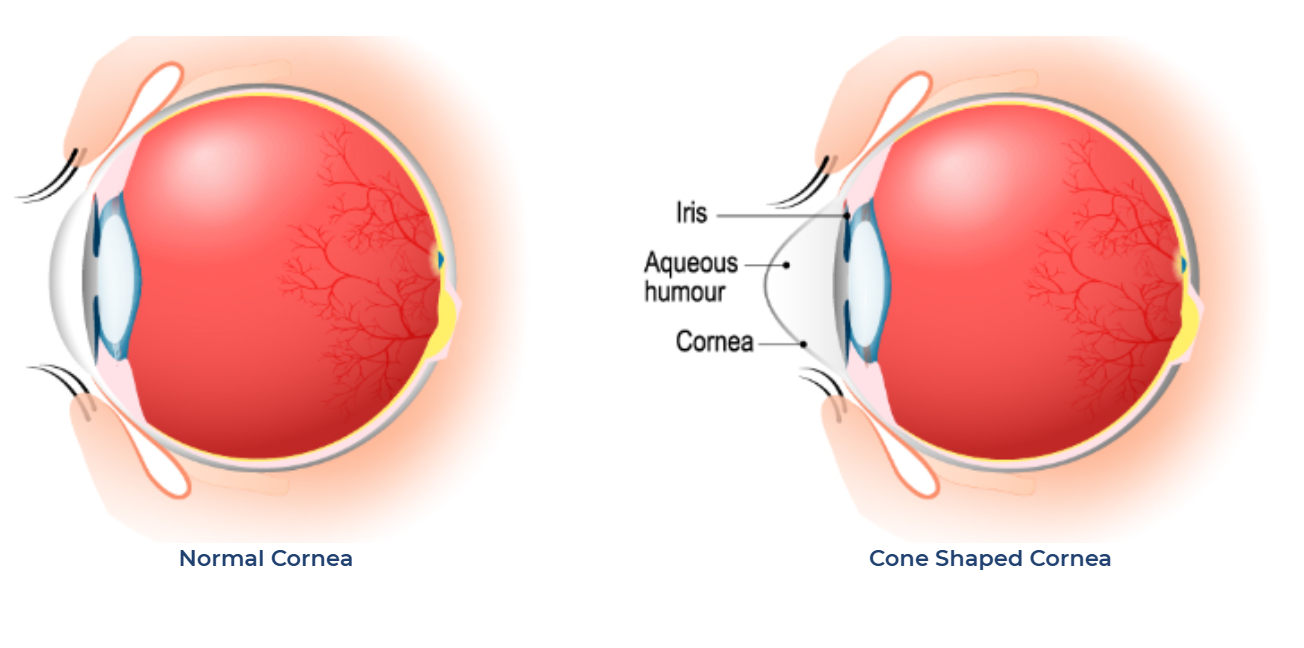Keratoconus & What is the Keratoconus?
Keratoconus occurs when your cornea (the clear, dome-shaped front surface of your eye) thins and gradually bulges outward into a cone shape. A cone-shaped cornea causes blurred vision and may cause sensitivity to light and glare..

Who is affected by
Keratoconus?
Keratoconus usually affects both eyes and generally begins to first affect people ages 10 to 25. The condition may progress slowly for 10 years or more.
Treatment methods of Keratoconus?
In the early stages of keratoconus, you can correct vision problems with glasses or soft contact lenses. Later you may have to be fitted
with rigid gas permeable contact lenses or other types of lenses. If your condition progresses to an advanced stage,
you may need corneal collagen cross linking using UV radiation, Intrastromal corneal rings or corneal transplant.
Dryness & Ocular Surface Disease
Ocular dryness may affect many patients especially in summer and hot climate,
this can cause eye redness, discomfort, itching, and feeling of heaviness.
Common causes are:
- Prolonged use of smartphones and computers
- Prolonged direct sunlight exposure
- Low water intake
- Chronic Blepharitis
- Rarely caused by some rheumatologic disorders
Patients might need to use lubricant eye drops frequently for long-term relief.